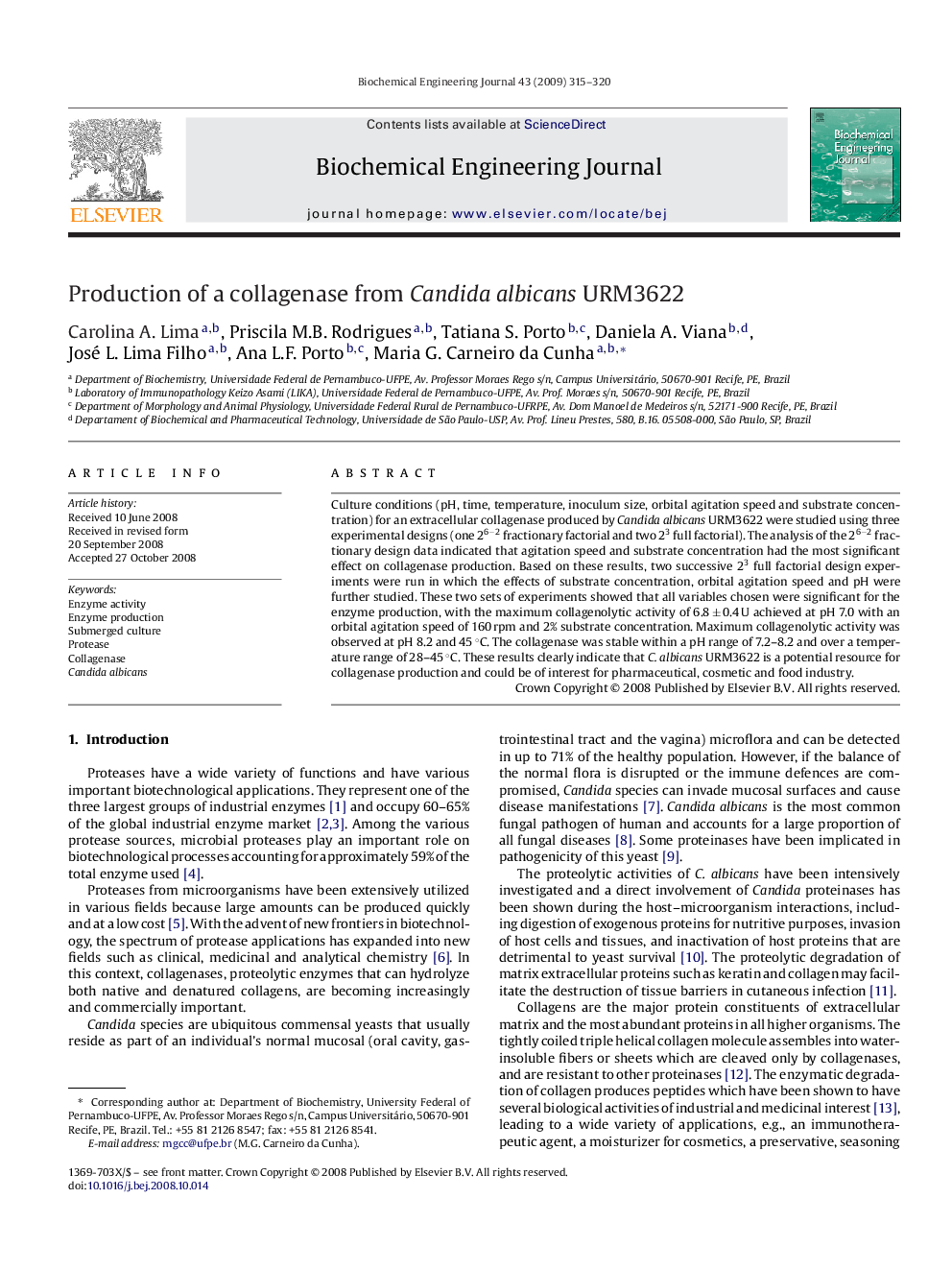| Article ID | Journal | Published Year | Pages | File Type |
|---|---|---|---|---|
| 4082 | Biochemical Engineering Journal | 2009 | 6 Pages |
Culture conditions (pH, time, temperature, inoculum size, orbital agitation speed and substrate concentration) for an extracellular collagenase produced by Candida albicans URM3622 were studied using three experimental designs (one 26−2 fractionary factorial and two 23 full factorial). The analysis of the 26−2 fractionary design data indicated that agitation speed and substrate concentration had the most significant effect on collagenase production. Based on these results, two successive 23 full factorial design experiments were run in which the effects of substrate concentration, orbital agitation speed and pH were further studied. These two sets of experiments showed that all variables chosen were significant for the enzyme production, with the maximum collagenolytic activity of 6.8 ± 0.4 U achieved at pH 7.0 with an orbital agitation speed of 160 rpm and 2% substrate concentration. Maximum collagenolytic activity was observed at pH 8.2 and 45 °C. The collagenase was stable within a pH range of 7.2–8.2 and over a temperature range of 28–45 °C. These results clearly indicate that C. albicans URM3622 is a potential resource for collagenase production and could be of interest for pharmaceutical, cosmetic and food industry.
